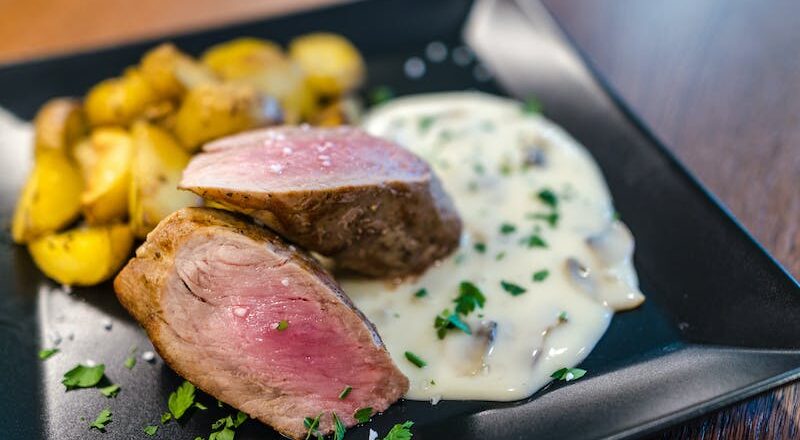
The different cuts of beef and veal
After the description of the main cuts of poultry and pork, here are the different cuts of beef and veal.
When we go to the butcher to buy a piece of meat, we are really spoiled for choice for all the cuts we can find. How to choose the one that best suits the type of recipe we want to prepare? Here is a brief guide to the main cuts of beef and veal, to know them and to learn how choosing the most suitable piece for our needs.
The different types of cuts of beef are generally divided into first, second and third categories, depending on whether they are part of the posterior quarter, the anterior quarter, or parts of the abdomen and limbs respectively. The first category cuts are the best, most precious and tender, coming from the dorsal-lumbar region and the thigh of the animal, ideal for grilling: the short loin and sirloin, the fillet or tenderloin, the rump and the round belong for instance to this group.
The second category cuts instead come from the anterior quarter, and therefore the dorsal part, ribs and shoulder, which have different morphological characteristics for smaller dimensions, greater quantities of fat, connective and cartilage than the posterior one, but still good from the point of view of nutritional and organoleptic properties, ideal for roasting or stewing. This group includes for example the chuck, the rib and brisket.
In the third category we find the cuts coming from the limbs, from the neck and from the belly, like the shank, the plate and the flank, very fat and tasty, ideal for long cooking such as broths, boiled or to be minced.
Some second and third category cuts of meat are also known as “poor cuts”. Let’s see now specifically the characteristics of some of the cuts mentioned above.
The bottom sirloin is a first category of beef cut, one of the largest that represents the inner part of the thigh, is triangular in shape and with little fat, ranging from 1 to 4%. It is ideal for short cooking, such as thin slices, cutlets and thick steaks to be cooked on the grill, or even for roasts and stews. Or to make a high quality minced meat.
The loin is one of the most popular and prized cuts of the bovine back, where the ribs are obtained from the front towards the animal’s head, while from the rear the “Fiorentina”, with the typical T-shaped bone that separates the fillet from the sirloin. Excellent for roast beef, tender steaks and “tagliata”, the typical sliced beef.
The rump is another large and important cut of first category, composed of the muscular masses near the bovine’s hip, which join the loin and the thigh, very valuable and suitable both for long cooking such as stews, but also amazing steaks, sliced beef, roast beef, escalopes and carpaccio.
Among the second category cuts we find those obtained from the front of the animal such as the shoulder, with a fat content ranging from 1 to 4%. It is suitable for both long and short cooking, for cutlets, stew, roast, minced or carpaccio. The chuck is a cut that despite being of the second category has a tenderloin-like tenderness. Despite this it is used for long cooking, in broth or braised, thanks to the fair amount of fat, ranging from 4 to 7%, which does not make it stringy, as well as roast, stew or sliced beef and steaks to be cooked rare on the grill (the famous Flat Iron Steak derives from this cut).
Other second category cuts are the short loin or diaphragm, obtained from the ribs, thin, tender and poor in fat, perfect rare with a quick cooking (the famous Hanger Steak), while above the belly we obtain the brisket, from the intercostal part of the bovine, between the back and the chest: it has a flat shape and is rich in fat, bones and cartilages, suitable for preparing a tasty broth. In fact it is the perfect cut for boiled meat, but also for stews.
Noteworthy for its goodness and versatility is the neck, very economical third category cut, from which steaks or escalopes are obtained and ideal for its softness to roasts, braised meats and stews. The flank is instead a cut coming from the belly, as exceptional as it is undervalued, from which the famous Flank Steak is obtained, very tasty and succulent. However, since it is rich in connective tissue, it must be cooked very quickly so as not to harden it, better if marinated for half an hour to soften before cooking quickly.
It is important to know the different parts that we are going to buy, above all not to always turn to the usual most famous cuts, but also to opt for second and third category cuts often overlooked, which can instead satisfy our requests in a lot of recipes, enhancing the animal in its entirety and thus limiting waste in the butcher’s shop. All this, as well as having tasty, nutritionally valid and low-cost meats available.





